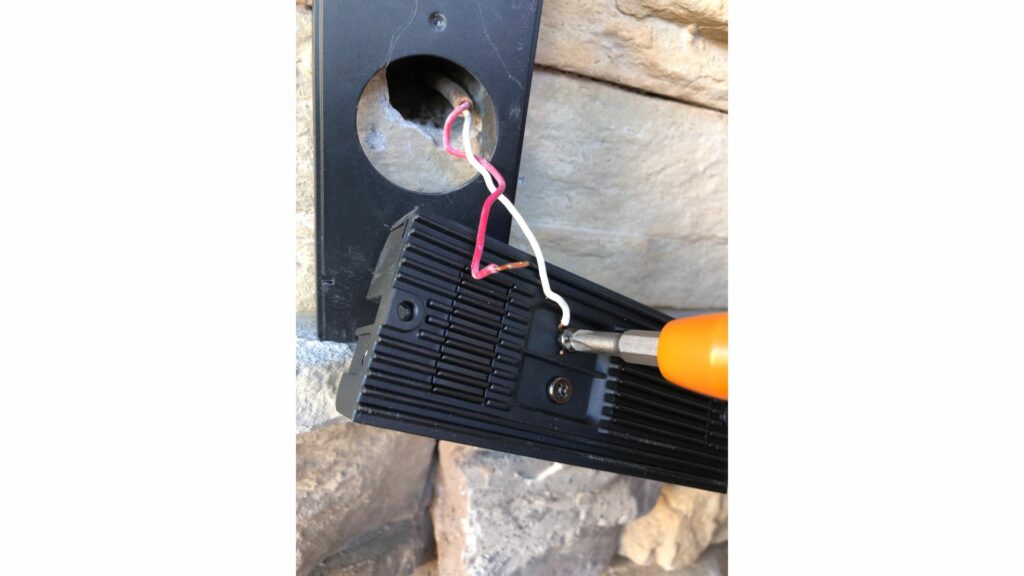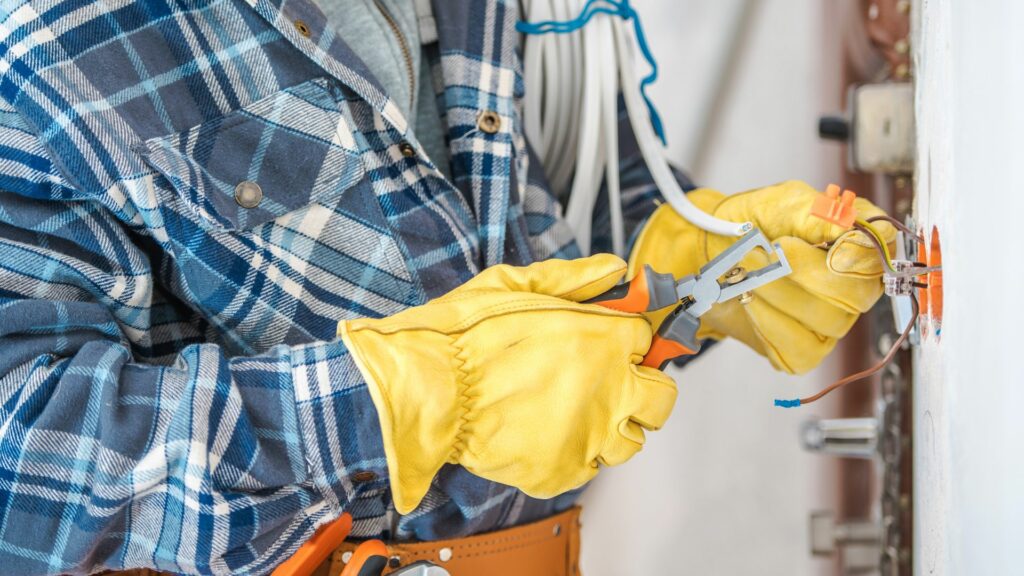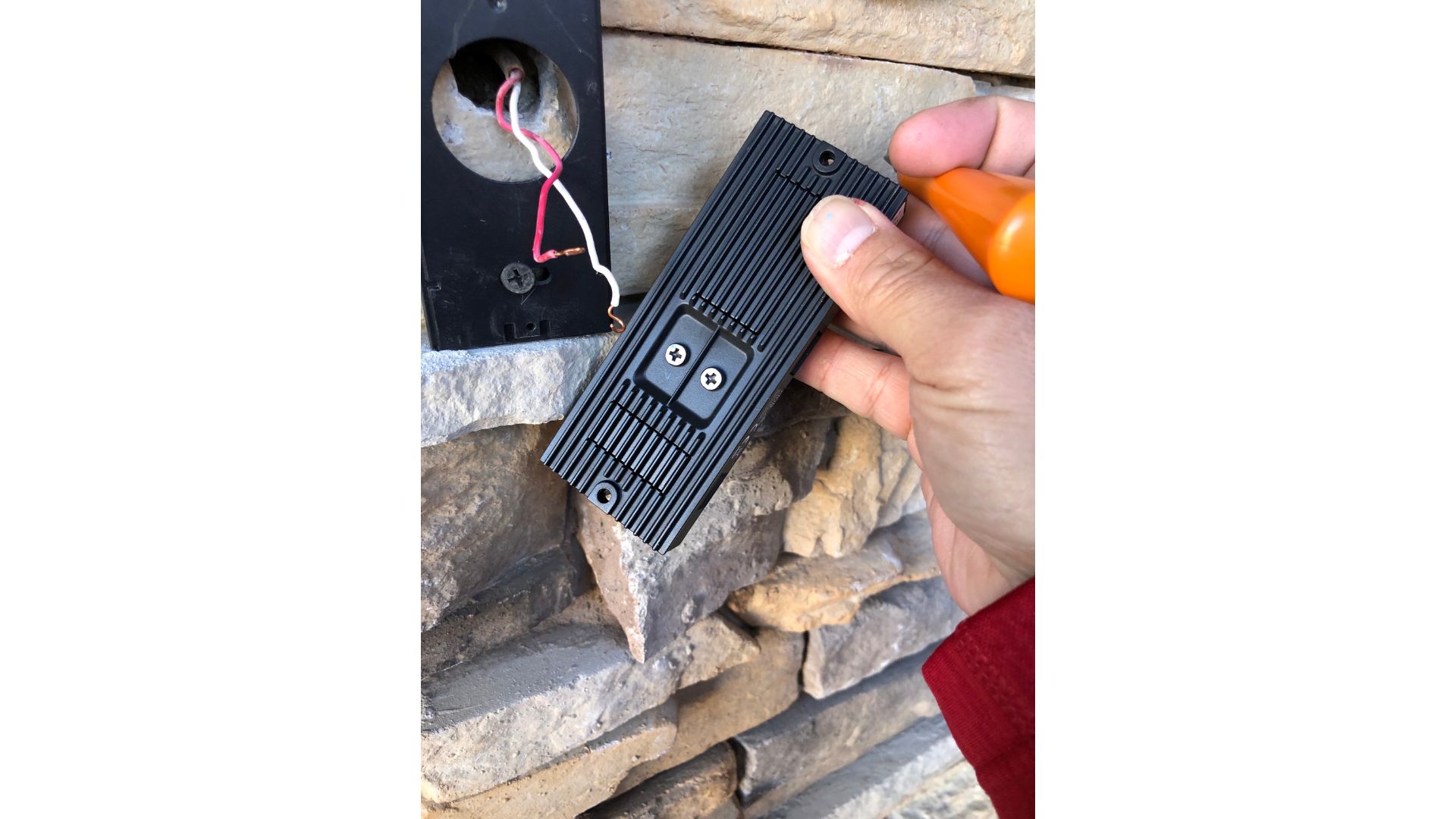Exposed wires are dangerous because they are an electrocution hazard. The live wire brings the current to the appliance while the neutral line takes that power back. Touching these conductors can kill you. Technically, the ground is safe because it doesn’t carry electricity unless a short circuit or surge occurs. But that doesn’t mean you can handle it carelessly.
Does that make exposed doorbell wires a threat to your life? Not necessarily. Consider the following:
1). Battery-Powered VS Hardwired Doorbells
Exposed doorbell wires concern laypeople specifically because of the 120V or 240V electrical system in a conventional home that runs the doorbell. However, popular doorbell brands like Ring manufacture battery-powered products.
Battery-powered doorbells are easier to install than their hardwired counterparts. More importantly, the devices are harmless. They don’t have enough power to kill the user.
2). Use Of Transformer
Even when you install a traditional hardwired doorbell, these devices are not a direct threat because they use a transformer to change your home’s 120V power to the 10 – 24 volts a doorbell can tolerate. Some older doorbells use as little as 8 volts.
For this reason, many consumers install, repair, and replace doorbells without cutting the power at the breaker. The energy these devices use is too low for their exposed wires to cause you significant harm.
3). It Can Start A Fire
Does a doorbell’s low voltage mean you can leave the live wires exposed? No, it doesn’t. Technically speaking, a doorbell’s exposed wires won’t harm you. However, they can start fires. This is true for every electronic device, regardless of its electrical requirements.
It only takes one spark from two or more exposed wires to ignite curtains, magazines, newspapers, towels, and other flammable materials.
Additionally, exposed wires influence an electronic item’s efficiency by causing a higher electrical draw, potentially leading to a short circuit or power surge.
4). 120V VS 24V
People dismiss the threat a doorbell’s exposed wires pose because these devices use 24 volts or less. But doorbells are only safe on the secondary side of the transformer.
Keep in mind that the transformer changes from 120V to 8 – 24V for the doorbell to use. But what about the power on the primary side? This power is still 120V, possibly even 240V because the transformer hasn’t changed it. Therefore, exposed wires on the primary side of a doorbell system should scare you. Don’t handle them without cutting the power.
5). Sparks
What if you remove all the flammable material surrounding the exposed wires? What if you take all the necessary precautions to prevent surges and short circuits? Does that make a doorbell’s exposed wires safe?
Again, not necessarily. The sparks exposed wires produce when they touch can startle people. You don’t know how your home’s inhabitants will respond when you startle them. The shock could lead to a fatal fall, especially if the individual in question expects a potentially lethal shock because they don’t realize that a doorbell uses 24 volts or less.
All in all, while exposed doorbell wires are not a big deal, a responsible individual will cover them to prevent potentially fatal fires and accidents.
Causes of Exposed Doorbell Wires

- You cut the doorbell off during a remodeling project.
- You removed an old doorbell but haven’t installed a replacement yet. The wires will remain exposed until you install the new doorbell.
- Your previous contractor made a mistake. They forgot to connect the exposed wires to the relevant terminals.
- Your previous contractor wired the doorbell poorly. They got to the end and found that they had extra wires. But rather than capping them, your electrician left the wires exposed because of ignorance or negligence.
- Pests gnawed through the wires, exposing the conductors.
- Crowding in the box wore the insulation off, exposing the conductors beneath.
- Because of your inexperience, you cut, stripped, and left some of the wires exposed during a DIY project.
How To Cover Exposed Doorbell Wires?
Common sense will tell you to cover the exposed wires. But believe it or not, this isn’t always necessary. The cables are potentially dangerous because of the current they carry. You can eliminate this threat by de-energizing the circuit.
Find the breaker that controls the circuit and flip it to the off position. This option only works if the doorbell has a dedicated circuit. You can afford to deprive the entire circuit of power. If the doorbell shares a circuit with other appliances, covering the exposed wires is your only option. The process involves the following:
- De-energize the circuit using the breaker.
- Check the wires with a tester. Make sure they are dead.
- Wear protection. That includes goggles and gloves. Even though doorbells are too weak to harm you, you should apply caution.
- Get the exposed ends and remove the plastic coating (Half an inch).
- Push the ends into wire nuts. Twist the nuts (Clockwise). Make sure the nut size matches the wire size. Large nuts won’t provide a secure grip. The conductors won’t fit in small nuts.
- Wrap electrical tape around each nut.
Where necessary, install an electrical box. Stuff the exposed wires into the box and cover it. Try to keep the following in mind:
- Don’t mix high and low-voltage lines in a box if you can help it.
- Don’t crowd the box. Overcrowding leads to overheating, which can start a fire. Unless the wires have adequate ventilation, overheating is a bad idea.
- Label the wires. This will help you remember what each wire does and where it goes, especially if you need to perform repairs.
- Use clips to organize and secure the wires.
- Despite the convenience, wire nuts are superior to electrical tape. People prefer electrical tape because of its accessibility and availability, but wire nuts are more reliable. Push terminals are better than both of them.
- You can repair minor damage with tape, but only temporarily. Ultimately, you should replace torn or broken cables. Otherwise, you can’t trust them.
- Don’t use duct tape in place of electrical tape. Electrical tape is called so because it is designed to withstand electricity. It provides insulation.
Do I Need Professional Help To Cover Exposed Wires?

Most laypeople need professional help because they know nothing about electronic devices. They’ve never repaired a wire. In fact, most laypeople are more likely to ignore a doorbell’s exposed wires because they don’t appreciate the threat exposed conductors pose.
Such individuals should hire an expert immediately. But if you have some experience with DIY projects, you can cover exposed wires without assistance.
When To Contact Professional Help?
- If you don’t have electrical expertise, contact professional help immediately.
- If you live in a country that prohibits non-licensed individuals from performing electrical work, contact help immediately.
- Once you notice inexplicable signs of arcing, get help.
- Once the task at hand forces you to rip the walls, floor, and ceiling open, hire an expert.
How Much Does It Cost?
If you hire an expert to cover the exposed wires, you will only pay the labor fees. Electricians charge between $40 and $120 per hour. The longer it takes to cover the wires, the more you will pay.

